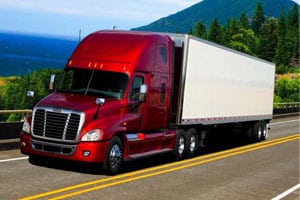While most of us are still busy ringing in 2016, the nation’s primary package handlers are equally busy implementing their annual rate increases. As a result, it promises to be anything but a Happy New Year for retailers trying to watch their bottom line.
Thankfully these package rate increases don’t automatically mean your company has to raise prices or put its shipping in the red. Even though higher last-mile delivery costs are inevitable, there are still many other ways to help offset them further up the supply chain.
At International Origin: Use Expedited Ocean Instead Of Air – Or Employ a Mix of Air and Water
Where You Might Be Spending Too Much: If your company sources goods internationally, you probably already use ocean shipping for the majority of your global product transits. However you may have found yourself having to expedite some particularly hot shipments via air in order to ensure their on-time arrival, an option that’s approximately eight times more expensive.
What You Can Do About It: Next time you’re in a rush, consider using time-definite ocean shipping instead of air. It costs 75% less and is often just as reliable. Or if that’s still not fast enough, try using a sea-air or air-sea service, two options that allow your company to fly goods for part of the way and use ocean for the rest. Either one will result in considerably lower freight bills than your company would pay if it used air for the entire journey.
At Your U.S. Port Of Entry: Consider Using DC Bypass As Appropriate
Where You Might Be Spending Too Much: Suppose you’re bringing your internationally sourced goods into the Port of LA, Long Beach or Oakland but your nearest warehouses are located far inland. If you’re using a traditional distribution center configuration, the goods destined for your West Coast customers or stores could wind up making two unnecessary transits – one to the inland DC, the other back to the coast. The same redundant transportation scenario applies if you’re bringing goods in via the East Coast instead.
What You Can Do About It: By adding a de-consolidation center near your port of entry– or using one operated by a 3PL – it’s possible to direct-ship products to nearby coastal customers or stores. This practice will eliminate the inefficient practice of shipping goods “there and back again” and allow your company to eradicate the associated shipping and handling expenses.
On The Road: Strive To Mode Shift
Where You Might Be Spending Too Much: The term “less than” in Less-Than-Truckload (LTL) applies only to the kind of shipping it is, not to how much it costs. Each time your company sends goods via LTL instead of full truckload you’re probably paying anymore from 10% to 30% more.
What You Can Do About It: Try to negotiate with your customers. Although most probably prefer to get more frequent small deliveries – a factor that often drives up the use of LTL – some might agree to a less aggressive delivery schedule in order to help you build and ship more full truckloads. This is particularly true if you’re willing to offer discounts or gainsharing incentives in return for their cooperation.
With Your Freight Carriers (Part 1): Revisit Your Freight Classification
Where You Might Be Spending Too Much: There are 18 National Motor Freight Corporation freight classifications, and substantial differences in the cost to transport each. Unless your company is using the correct ones for all of its products, you could inadvertently be shipping many extra dollars out the door.
What You Can Do About It: Re-examine how your freight is being classified, especially if you’ve added a lot of new products, changed your product configurations or altered some of your packaging. Some of it may be eligible for a less expensive class.
With Your Freight Carriers (Part 2): Revisit Your Load Configuration
Where You Might Be Spending Too Much: When it comes to loading trailers, extra space is a recipe for waste, because it represents one or more pallets, boxes or cases that could have traveled on that particular shipment instead of a different one. Over time, those “coulda, woulda, shoulda” pieces of cargo can add up to many extra truckloads, each of which costs your company money.
What You Can Do About It: Much of this waste can be avoided with the consistent use of trailer cube utilization tools. However these tools are only as effective as the dimensional data that’s being plugged into them, and often that data isn’t accurate or up to date.
With this in mind, spend a few weeks gathering highly specific information about the contents of your most recent outbound truckloads to double-check the precision of the dimensional numbers you’ve been using. Then use that refreshed data to run new trailer cube utilizations. It could help your company add several additional pieces of freight to each outgoing load. And that in turn could ultimately reduce the number and total cost of trailer loads you ship.
Etcetera
There’s a lot more to the cost-cutting story than this. For example, sending your goods via train instead of truck could shave an additional 15% off your ground transportation budget. And asking carriers to ship all your goods via the “freight all kinds” class – which skews near the middle of the freight spectrum – you could pay considerably less than shipping everything via individual classifications. However this only works if you have an eclectic selection of inventory and most would be classified on the higher end of the rate spectrum.
The possibilities really are myriad. And they don’t just pertain to transportation.
So don’t despair just because there’s yet another package handling increase upon you. With the help of a few strategic supply chain practices and a bit of due diligence, the future of your bottom line still could be bright.
Mark Hanson is Senior Director, Logistics for APL Logistics
